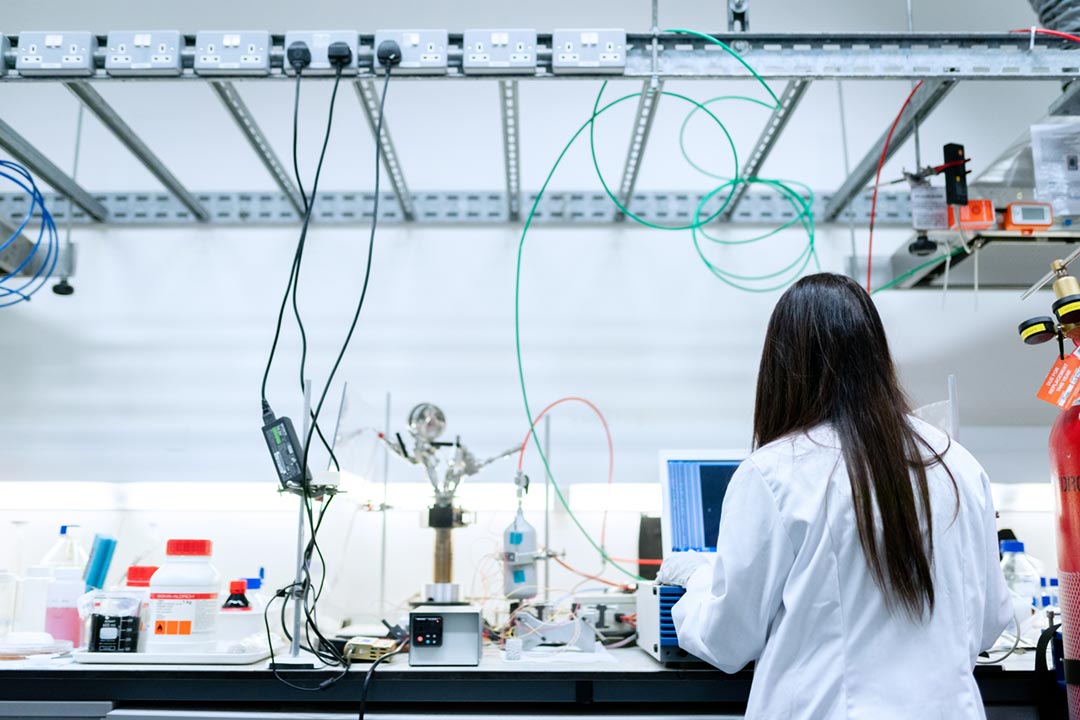Q&A: How “vaccine libraries” could arm us against the next pandemic
COVID-19 vaccines were developed in record time because scientists were already working on vaccines against related viruses. Dr Melanie Saville from the Coalition for Epidemic Preparedness Innovations (CEPI) explains how a similar approach could yield vaccines against future viral threats.
- 17 July 2023
- 5 min read
- by Linda Geddes

What is CEPI's 100 Days Mission?
Our aim is to have safe and effective vaccines available within 100 days of an epidemic or pandemic threat being identified – a goal that has been embraced by the leaders of the G7, G20 and industry. This is crucial, because the 100 Days Mission can only succeed if it's a shared global endeavour which delivers shared global benefits.
We need to do as much as we can upfront now, while we are in pandemic preparedness mode, rather than waiting until an outbreak happens and we are in emergency mode.
The 326 days that it took to develop the first COVID-19 vaccine was extraordinary, but if that had been 100 days, vaccines would have been available in April 2020 when there were only 2.3 million COVID cases, rather than 68 million cases in December 2020 when the Pfizer/BioNTech vaccine was approved for emergency use. Achieving this means doing as much as we can upfront now, while we are in pandemic preparedness mode, rather than waiting until an outbreak happens and we are in emergency mode.
What sorts of things can be done in advance?
We've identified the most important scientific and technological innovations that are needed to successfully deliver the 100 Days Mission. These range from stronger surveillance and alerting systems to identify viral outbreaks, through to geographically diverse manufacturing capacity to enable fair and equitable access to vaccines.
At CEPI, one thing we're prioritising is the development of a vaccine library – prototype versions of vaccines against representative viruses from different virus families, which could be swiftly adapted to tackle other related viruses.

For example, so far this century we've had three epidemics or pandemics involving coronaviruses: SARS, MERS and COVID-19. Although these diseases are caused by different viruses, they belong to the same family and behave in similar ways.
One of the reasons COVID-19 vaccines were developed so quickly is because scientists had been working on vaccines against SARS and MERS for several years before the emergence of SARS CoV-2. What they'd already learned enabled them to quickly pivot to this new virus. We hope to replicate this approach for other pathogens.
Which virus families will you include in the vaccine library?
We're hoping to include up to 10 of these virus families that pose the greatest risk to public health. To start with, we've chosen to prioritise arenaviruses, such as Lassa virus, which causes a viral haemorrhagic fever, and paramyxoviruses, such as Nipah virus. It has previously caused outbreaks and is a highly lethal disease. The aim is to really understand how these viruses work, what is the best approach to a vaccine, and to identify antigens that stimulate a strong immune response.
Have you read?
These would be married to a rapid response platform such as mRNA or the ChAdOx platform [used in the Oxford/AstraZeneca vaccine against COVID-19], and advanced through preclinical and early-stage clinical testing to build a package of safety and immunogenicity data, which would allow us to really hit the ground running when a new virus emerges. The vaccines could be quickly adapted to the new virus, like how the flu vaccine is changed each year.
It sounds like a massive task. How much progress has been made so far?
It is a massive task, but it's a finite task because the viruses that we already know have the capability to infect people all come from one of around 25 virus families. The WHO has convened groups of global experts to prioritise pathogens within each of those families, so we'll be able to use their recommendations to focus our vaccine library investments, which is an important step forward.
To start with, we’ve chosen to prioritise arenaviruses, such as Lassa virus, which causes a viral haemorrhagic fever, and paramyxoviruses, such as Nipah virus. It has previously caused outbreaks and is a highly lethal disease.
At CEPI we've kicked off some innovative projects which are contributing to the library, including a partnership with Korea-based company SK bioscience to develop prototype vaccines on their mRNA platform, which can be stored in the library and swiftly adapted if a related virus emerges.
We're also collaborating with Leipzig University in Germany and Houston Methodist Research Institute in the US to use AI technology to design virtual antigens to tackle a broad range of viruses which could be taken 'off the shelf' and plugged into rapid response platforms like mRNA to swiftly develop a new vaccine in the case of a novel disease threat.
We're also seeing increasing levels of political commitment for the vaccine library concept including from India, which holds the G20 presidency. That's really important because the vaccine library can't be delivered by any one country or organisation working alone.
CEPI has established a network of 15 laboratories in 13 countries, all of which are on standby to rapidly test vaccines against epidemic or pandemic diseases next time an outbreak occurs.
You're also building a network of vaccine testing laboratories in Global South countries. What will they be doing?
CEPI has established a network of 15 laboratories in 13 countries, all of which are on standby to rapidly test vaccines against epidemic or pandemic diseases next time an outbreak occurs. We've recently added five facilities based in Global South countries, including India, Kenya, Senegal South Africa and Uganda.
It's vital to the 100 Days Mission that expert laboratories are available in every region of the world, because it reduces the time taken to transport and test samples, which will ultimately help to fast-track vaccine development.
Dr Melanie Saville is the Executive Director of Vaccine Research and Development at The a href="http://www.cepi.net/"> Coalition for Epidemic Preparedness Innovations (CEPI).
More from Linda Geddes
Recommended for you









